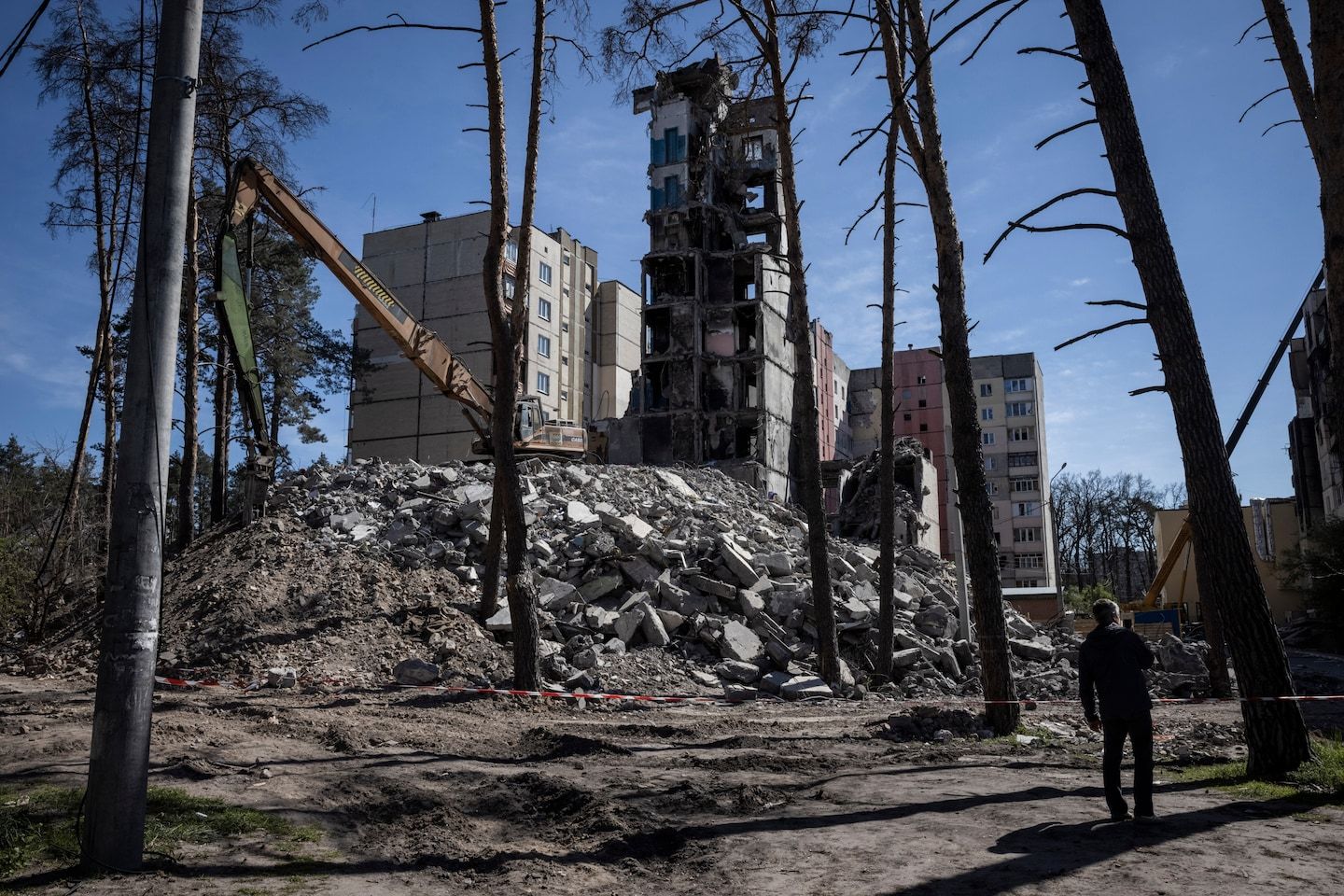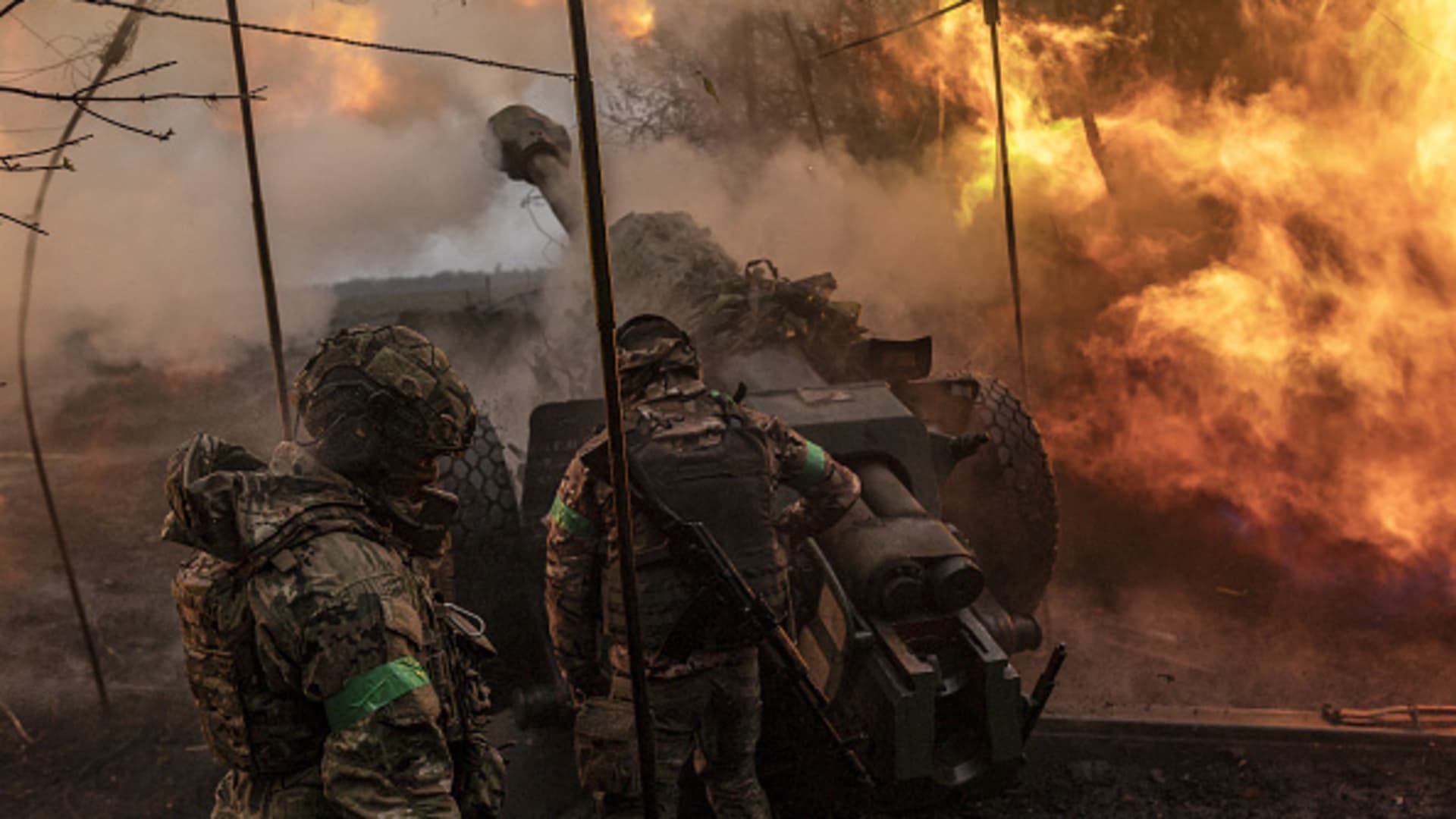Ukraine found an unlikely tool to resist Russia: Solar panels
Climate Solutions Ukraine found an unlikely tool to resist Russia: Solar panels Solar panels cover the top of a small hospital in the Kyiv suburb of Horenka. Ukraine is using small-scale renewable energy, especially solar panels, as a way to improve energy security in the face of Russian attacks on energy infrastructure. (Ed Ram for The Washington Post)
Listen 9 min Comment on this story Comment Gift Article Share
Russian airstrikes on Ukraine’s power grid plunged many parts of the country into darkness last fall, but one water company was able to keep its pumps going. Its field of solar panels, installed as an environmentally friendly measure before the war, turned into a tool to resist the Kremlin’s attacks. 10 steps you can take to lower your carbon footprint ArrowRight Now a growing number of Ukrainian hospitals, schools, police stations and other critical buildings are racing to install solar power ahead of what many expect will be another hard winter later this year.
A less carbon-intense, decentralized energy system is emerging as a key element of Ukraine’s reconstruction efforts. Seven months of Russian attacks on the energy grid have left it severely damaged. Ukrainian doctors, teachers and others have discovered that efforts to boost sustainability can also improve security by making it harder to knock power offline. Ukrainian policymakers, meanwhile, are setting ambitious clean energy goals, trying to shake off their prewar reputation as lagging on climate issues.
Ukrainian deputy energy minister Yaroslav Demchenkov said renewable energy, along with small modular nuclear reactors, are among the country’s priorities for its rebuilding effort. Both would help distribute power generation away from the heavily centralized system the country had before the war, making it more resilient in addition to lowering emissions.
Advertisement
Ukraine generated 11 percent of its electricity from renewable sources in 2020, according to the International Renewable Energy Agency, although more than half of its electricity came from nuclear power plants that are also low emissions. The country’s goal is to build 30 gigawatts of clean power by 2030, which would cover about half of Ukraine’s needs.
“Before the war started, people were thinking just about the economics. Now it’s energy security,” said Dmytro Sakalyuk, who works on energy projects at Ecoclub Rivne, an environmental organization based in western Ukraine.
A push for solar
Renewable advocates want solar power to be a sizable chunk of the new capacity. Although solar panels can’t easily rival the power generation of a nuclear plant, proponents say they are cheaper, faster to install and more useful as a quick solution to Ukraine’s immediate energy and security needs than nuclear power, which can take years to build and install.
Advertisement
If the efforts to spread renewable power are successful, advocates hope that they can speed Ukraine’s green future far faster than had been expected before the war. Some hope that installing solar panels might be the impetus for some Ukrainians to take even more actions to reduce their carbon footprint, strengthen their self-sufficiency and improve their ability to resist Russian attacks.
“It will be much more difficult to destroy this kind of decentralized system,” said Kostiantyn Krynytskyi, the head of the energy department at Ecoaction, a leading Ukrainian environmental organization. “You cannot bomb all the installations. And bringing self-sufficiency will help. We saw now what centralization in our energy system means.”
Even though Ukraine recently approved resuming electricity exports to its neighboring countries — a sign that its ability to generate power has recovered, for now, from the wintertime bombardment on the energy system — the solar work still has intense urgency, officials say. Ukrainian and allied officials warn that the cold months later this year could be even harder than the winter that just ended, since the grid will be starting from a more damaged level than last year. Getting enough diesel to power all the backup generators is also a challenge.
Advertisement
“The situation in the energy sector is still very fragile,” Demchenkov said in an interview. “It’s a very important challenge for us right now, during this period of time, to have enough equipment and allow a fuel stock, because we have information that Russia will use winter as a weapon again. For us, it is really important to have the physical protection of energy facilities.”
The European Union has pledged to ship thousands of solar panels to Ukraine. Ukrainians are also hoping for help from the United States and elsewhere.
In the meantime, advocates hope the current solar installations can serve as examples that build interest in a greener future.
Wartime panels
At a small hospital in the Kyiv suburb of Horenka, the medical staff learned the difficulty of operating without electricity in the first hours of the war last year. Horenka is next door to Hostomel, whose military airport was one of the first targets that Russian paratroopers attempted to capture. The town faced heavy Russian shelling. The hospital never closed its doors, but it lost power on the second day of the invasion and didn’t regain it for more than two months. Without power, its heating system partially failed. And then a shell landed on the street just outside the building, blowing out its windows and damaging the front facade.
Now the hospital has been rebuilt. This winter, along with much of Ukraine, it used diesel generators to keep going during blackouts. But diesel generators consume vast quantities of fuel, they are prone to breaking down, and their noise and fumes make them inconvenient for long-term use at places like hospitals.
Next winter, the medical personnel in Horenka hope to avoid them. In February, workers screwed solar panels onto its steeply pitched roof, completing a project that is expected to cover about half the hospital’s typical power needs — enough to ensure that critical equipment stays online even if the grid fails. A battery will extend the reach of the solar panels into the night. And an electric-powered heat pump can keep the hospital warm even if it gets cut again from the grid. The solar panels and battery cost $11,700 for a 12.6 kilowatt system — comparable in size to what might go on a house.
Advertisement
“We need long-term solutions for such hospitals,” said Denys Tsutsaiev, who works for Greenpeace Central and Eastern Europe in Kyiv and, along with Krynytskyi, helped organize the hospital’s solar project.
One of the first questions Tsutsaiev gets from foreigners, he said, is whether it makes sense to push forward with renewable projects at a time when Russia is still shelling the country. But, he said, that misunderstands the need.
“People are back,” he said. “People cannot live at the moment without hospitals. They can't live without schools.”
Nor did he and others expect solar panels to become targets. Given the small scale of the projects, it would not make sense for Russian to use one of its expensive and scarce missiles to go after solar panels on roofs, he said.
“It’s much more expensive to hit it with a missile than for us to rebuild it if it’s damaged,” he said.
Advertisement
Large-scale renewable projects have proceeded despite the war, including a wind farm in the southern Mykolaiv region that just completed its first phase of construction in March.
An array of solar projects
The effort to expand solar power isn’t always straightforward. Winters in Ukraine can be long, and the country is far enough north — roughly the same latitude as southern Canada and the northern United States — that daylight hours get short in December and January. Solar advocates say the panels still generate enough electricity during those months to be useful.
Ukraine doesn’t have a net-metering law, which would allow owners of solar panels to sell their excess power back into the system, although the parliament is working on legislation and Demchenkov, the deputy energy minister, said he hoped it would be finalized by autumn.
German Vice Chancellor Robert Habeck visited the hospital in Horenka last month to announce his government would offer $1.1 million toward eight similar solar pilot projects around Ukraine, and he urged German companies and philanthropies to follow suit. Ukrainian environmental organizations have identified dozens more hospitals, schools and public buildings where administrators would like to install solar panels or find other ways to be more self-sufficient.
The community where the municipal water utility installed solar panels already proved the value of renewable energy in a time of war, said Sakalyuk, who met with Habeck during his visit. After the power went out for more than a week across much of the southern Mykolaiv region late last year, the utility in the town of Voznesensk was able to keep water flowing even though most other activity ground to a halt. The waterworks had installed a 50 kilowatt solar power plant in 2020 as part of a green initiative.
Advertisement
“People have changed how they think about solar power,” Sakalyuk said. The resilience of the pumping station inspired a wave of new inquiries from businesses and homeowners who want their own solar panels, he said.
If the solar advocates are successful, they hope to make an impact that will last long beyond the war. Solar panels on schools, for instance, could make climate-friendly practices an ordinary part of children’s lives, said Anastasiia Vereshchynska, the international development manager at Energy Act for Ukraine, a group that installed solar panels on a school in the Kyiv suburb of Irpin late last year and has lined up 15 more projects this year across Ukraine.
“Our big goal is to change the culture in this country,” she said. “We want kids to be part of the sustainable development of Ukraine in the future, especially in the postwar period.”
Source: The Washington Post


